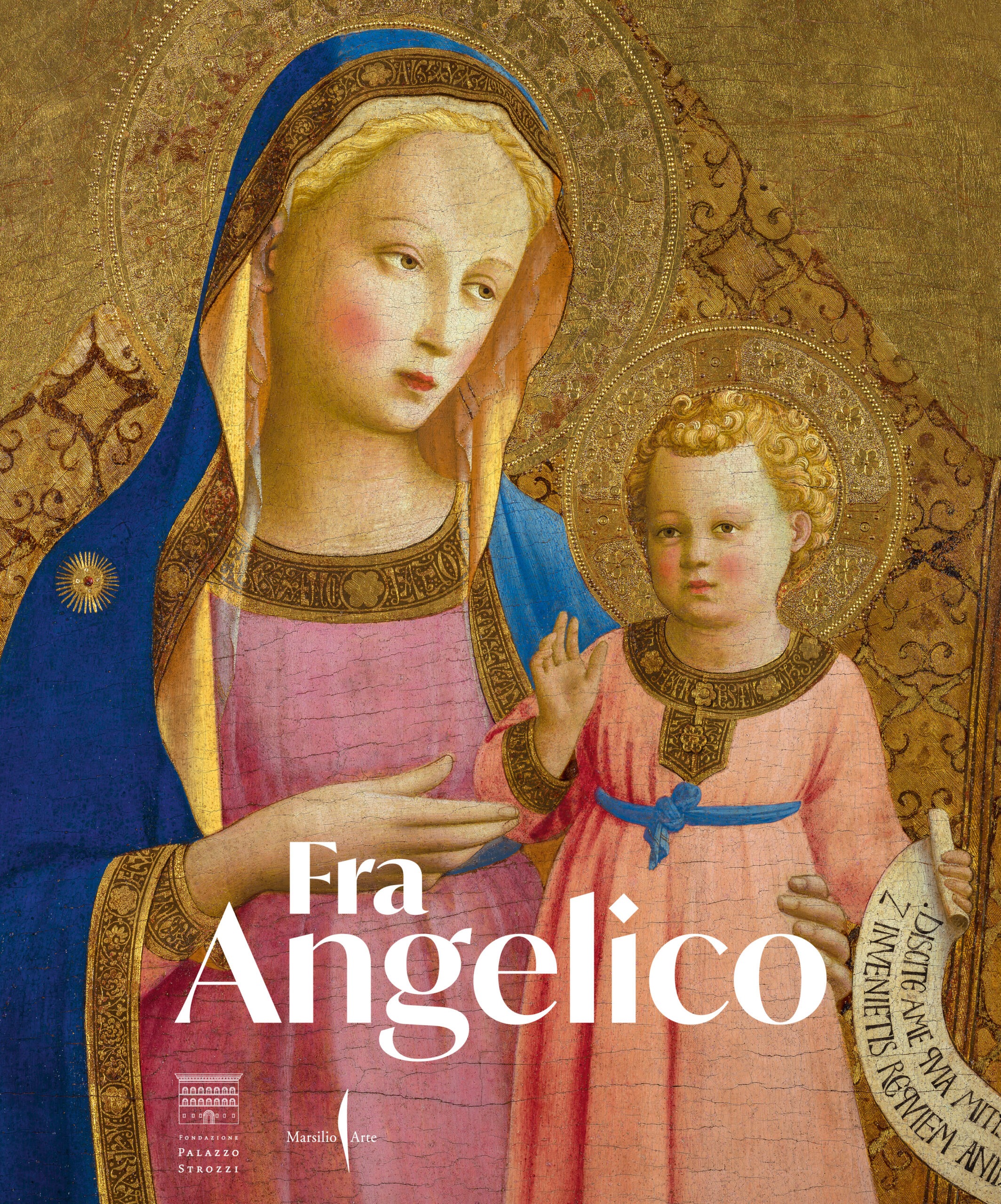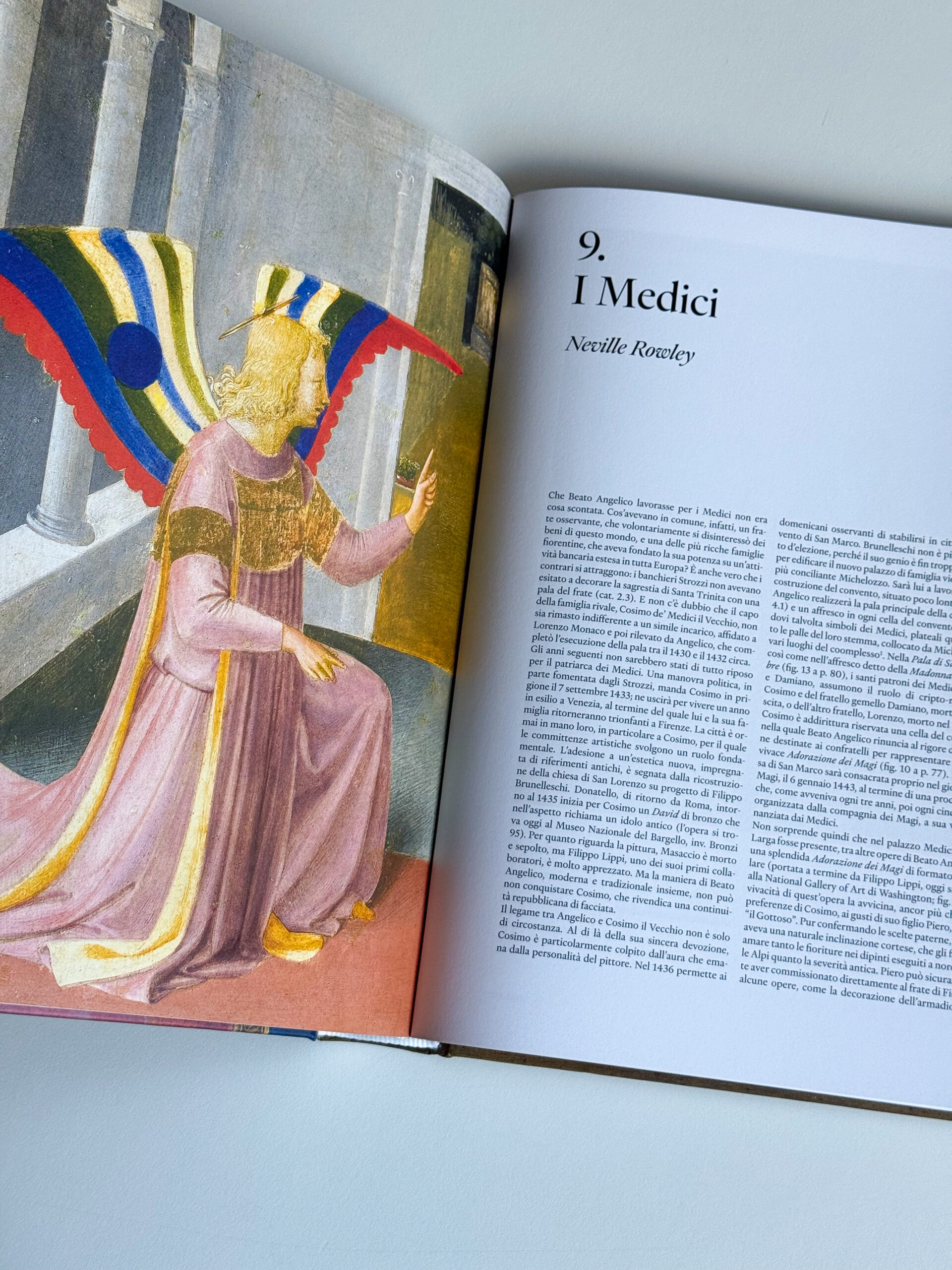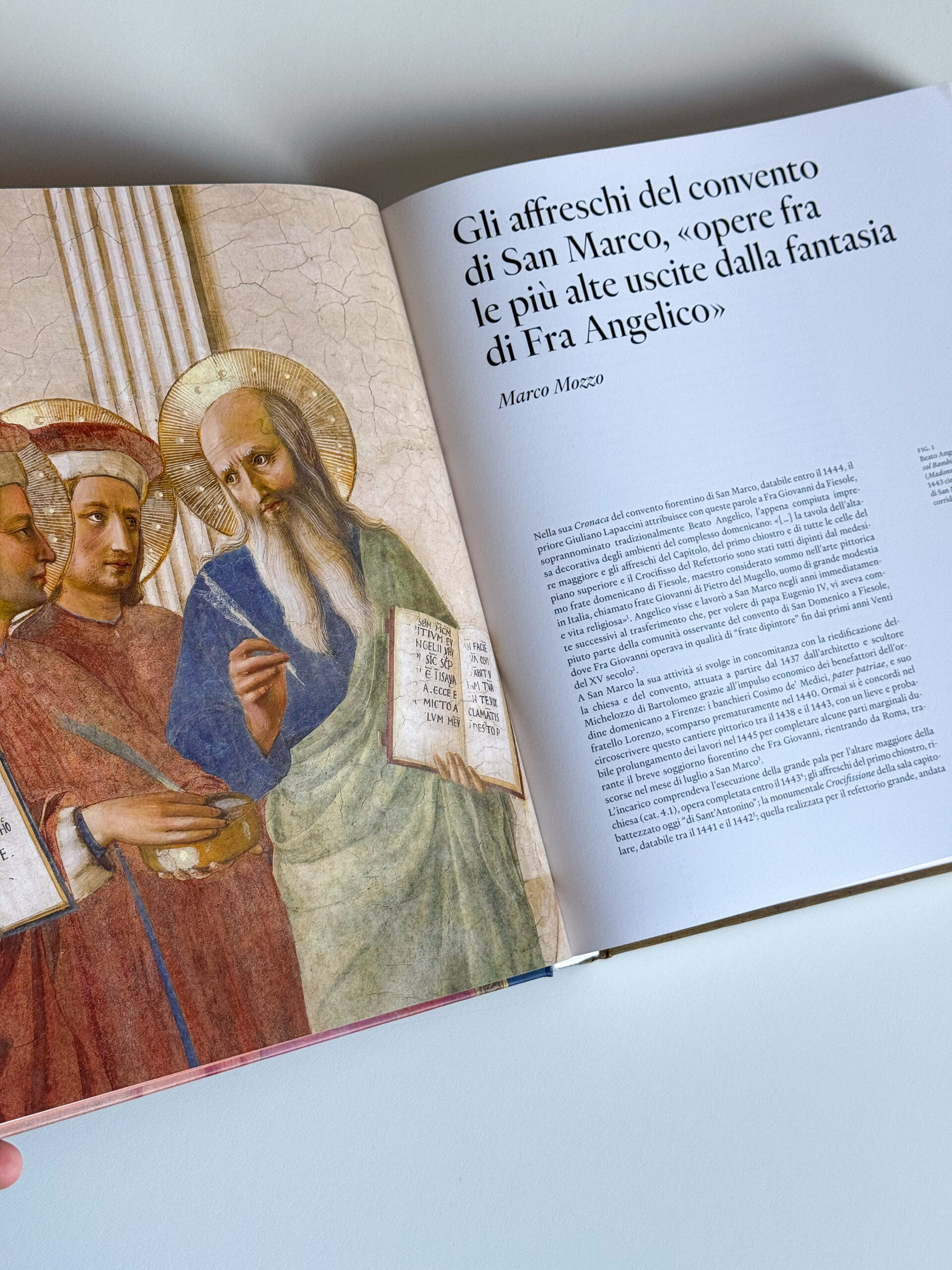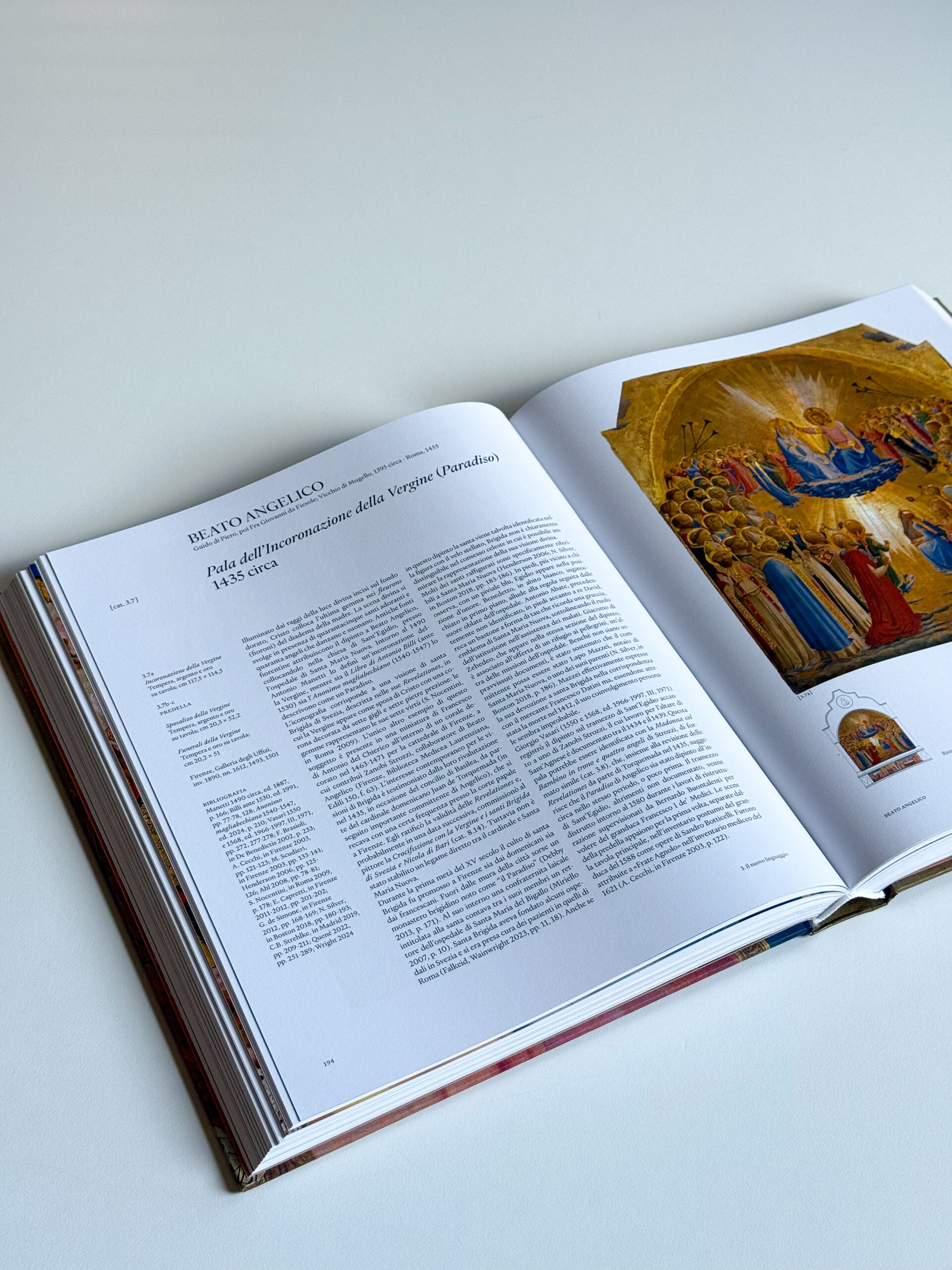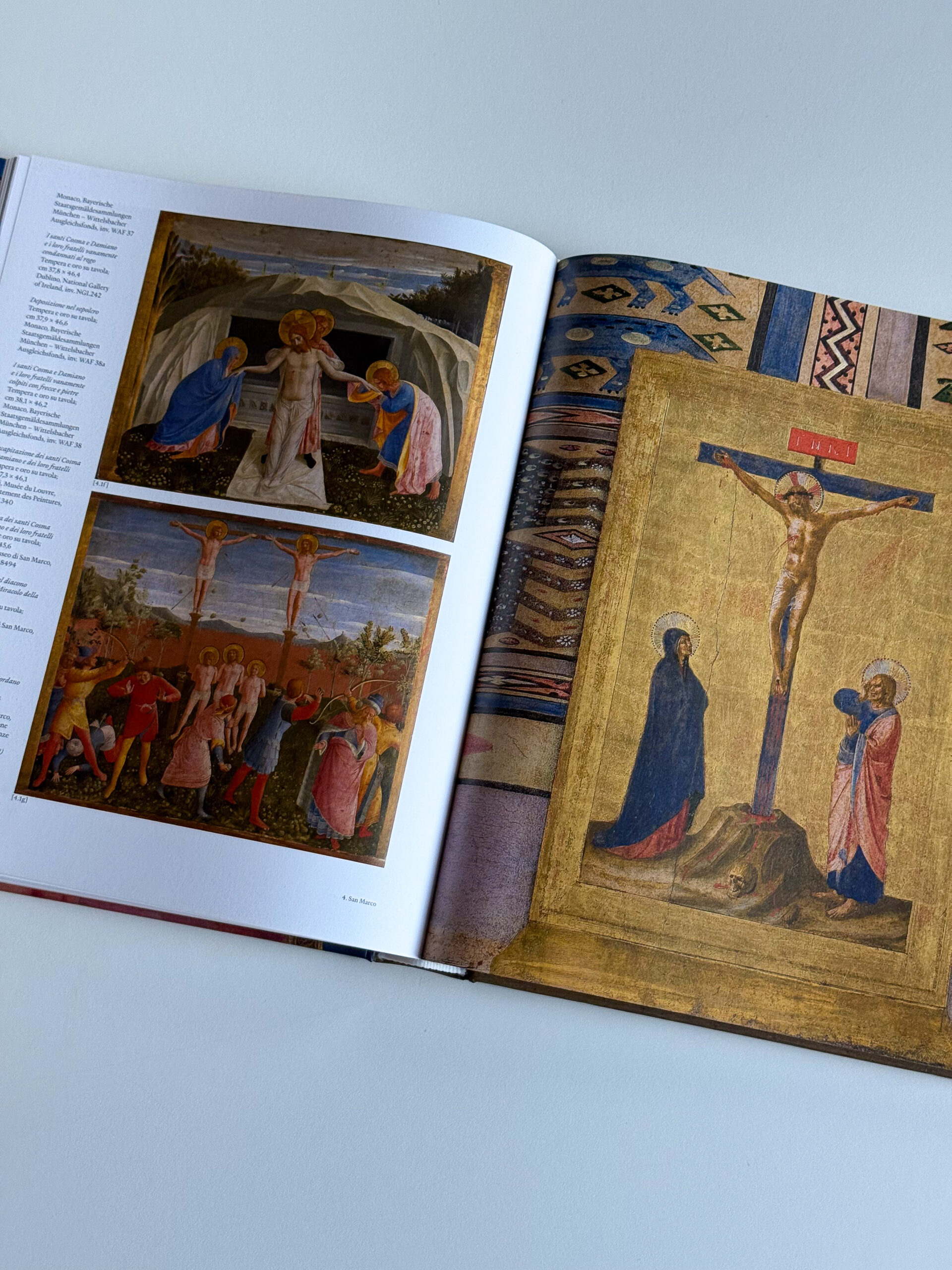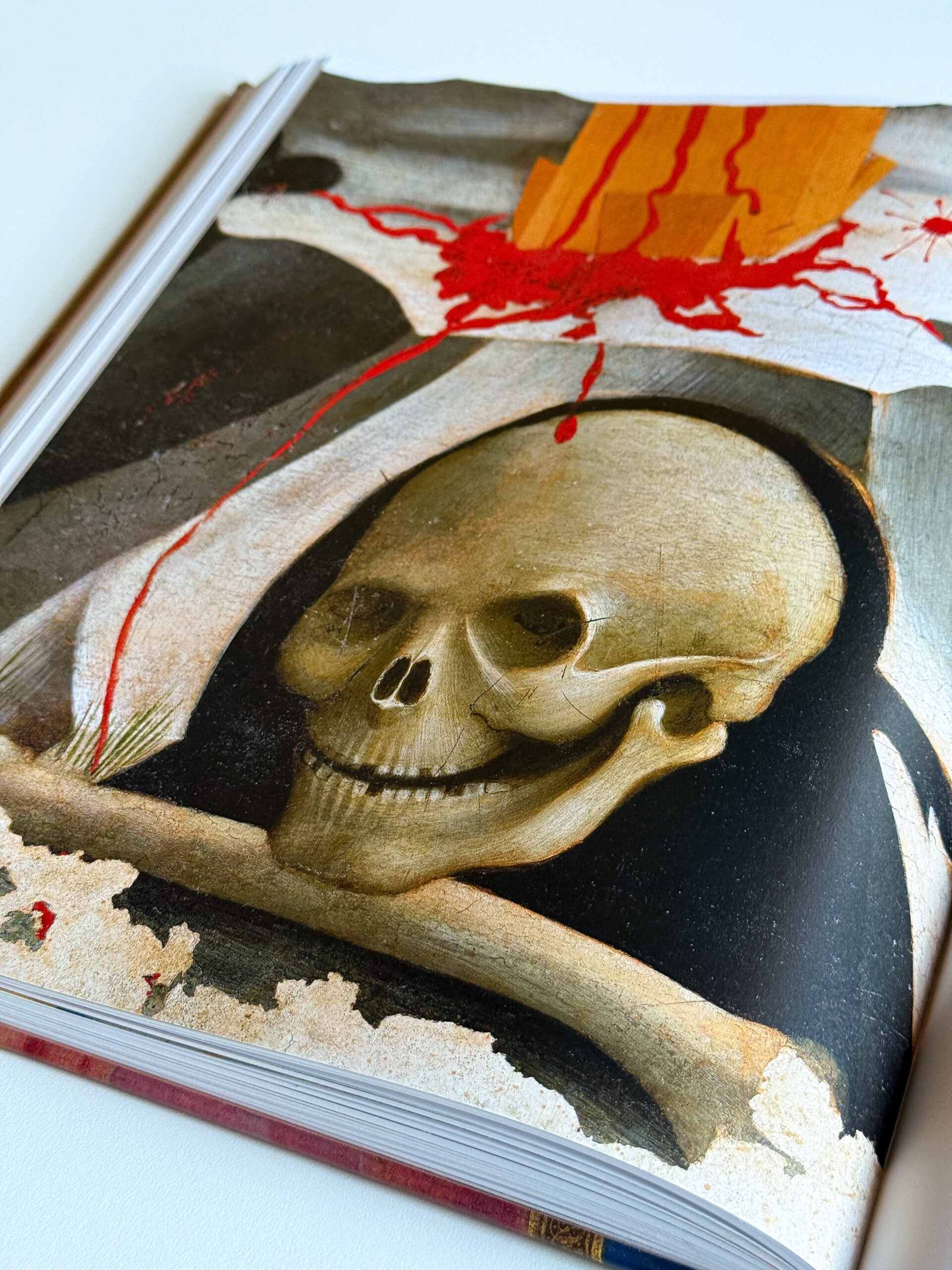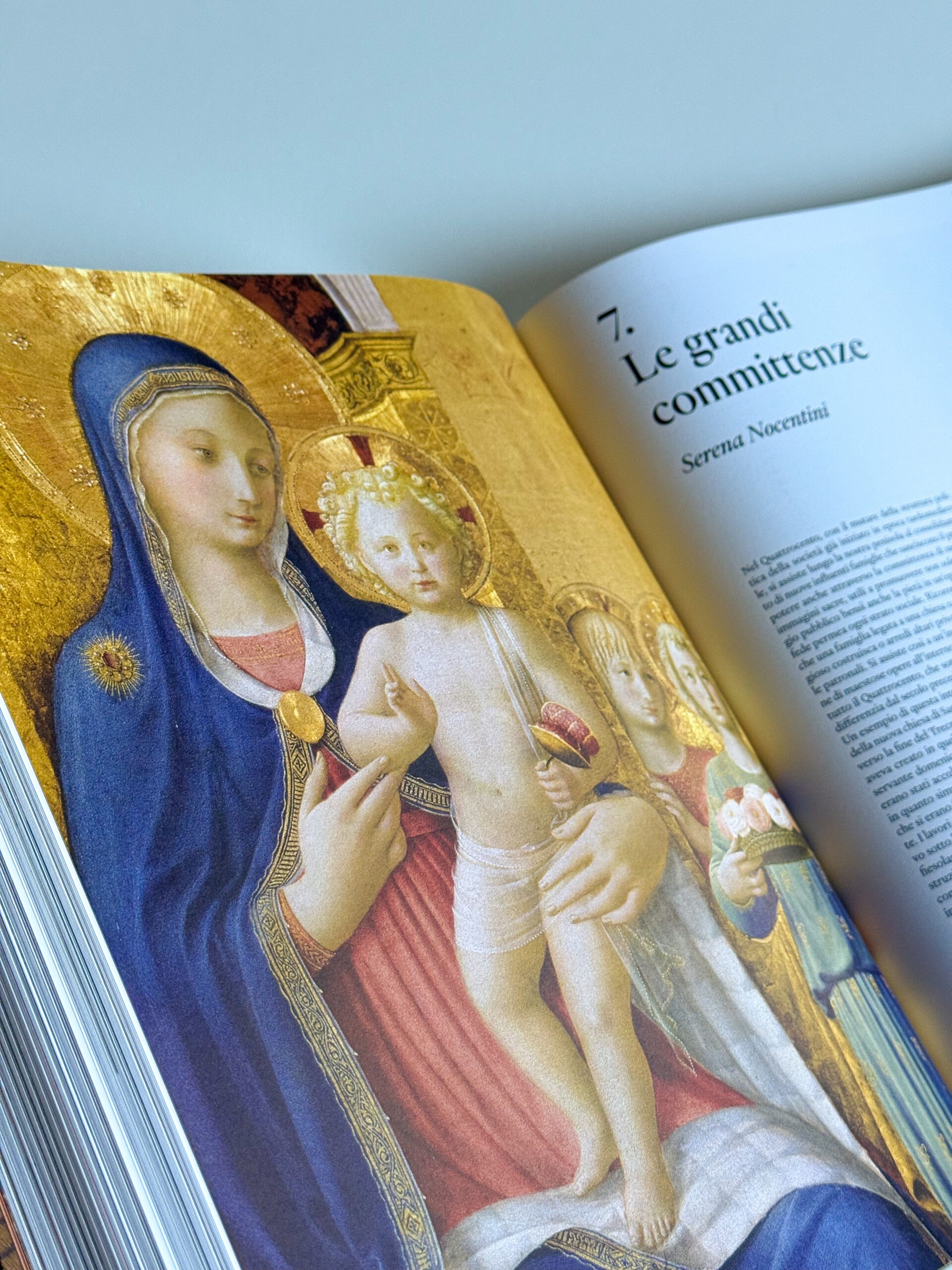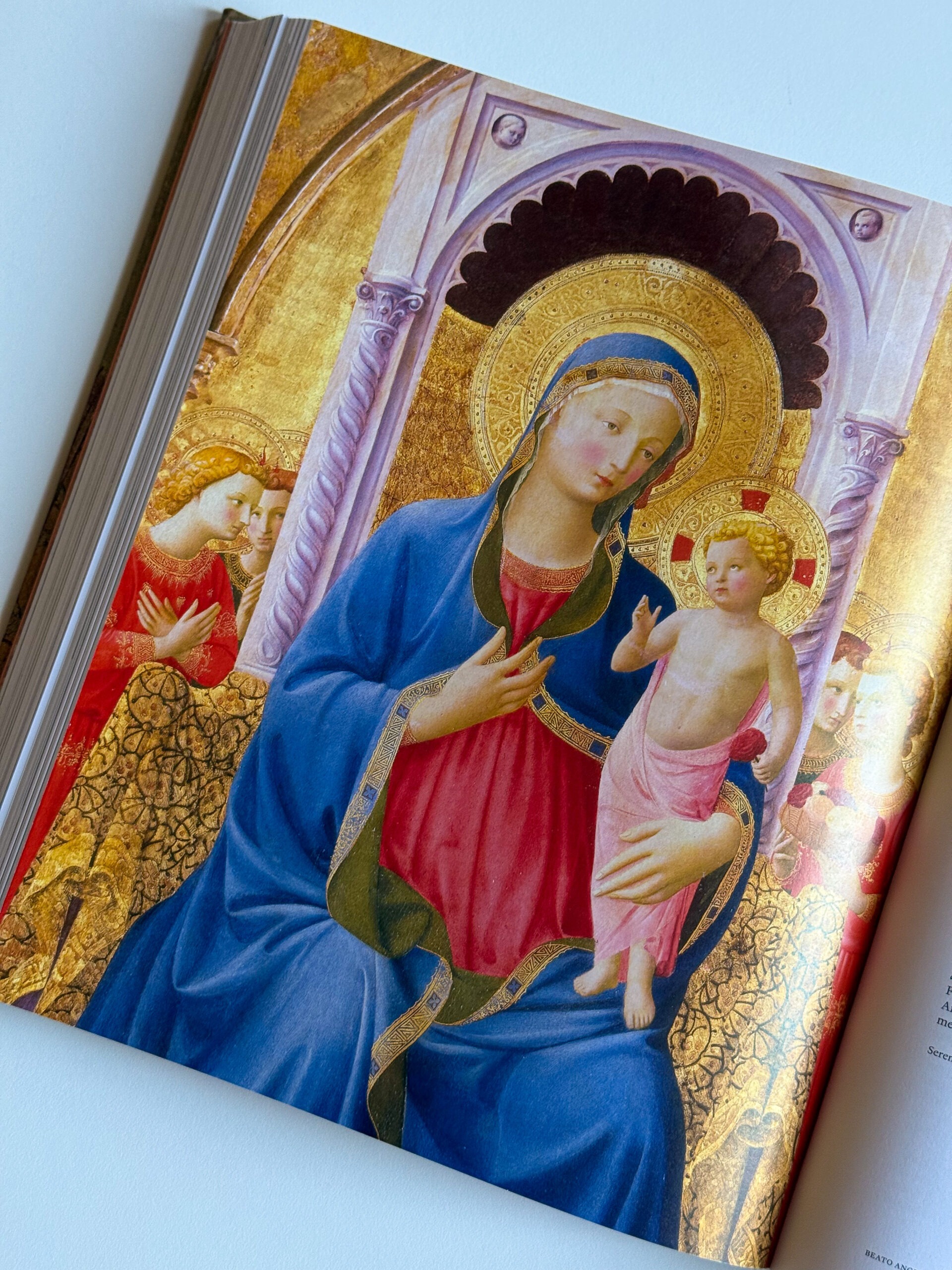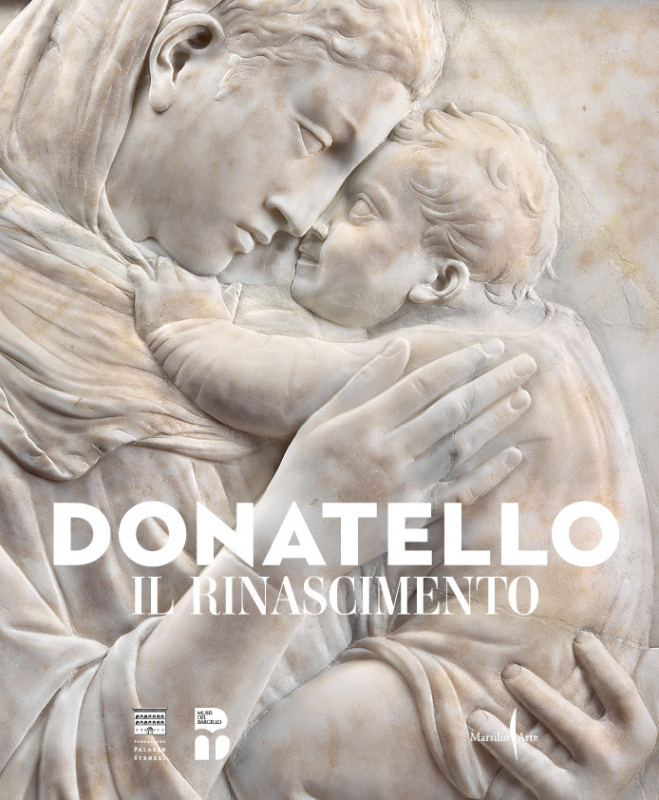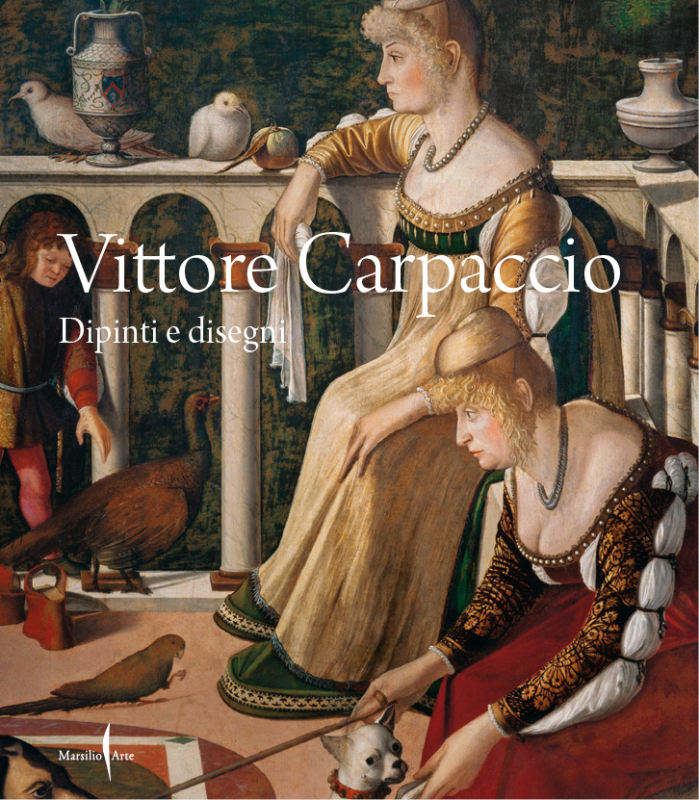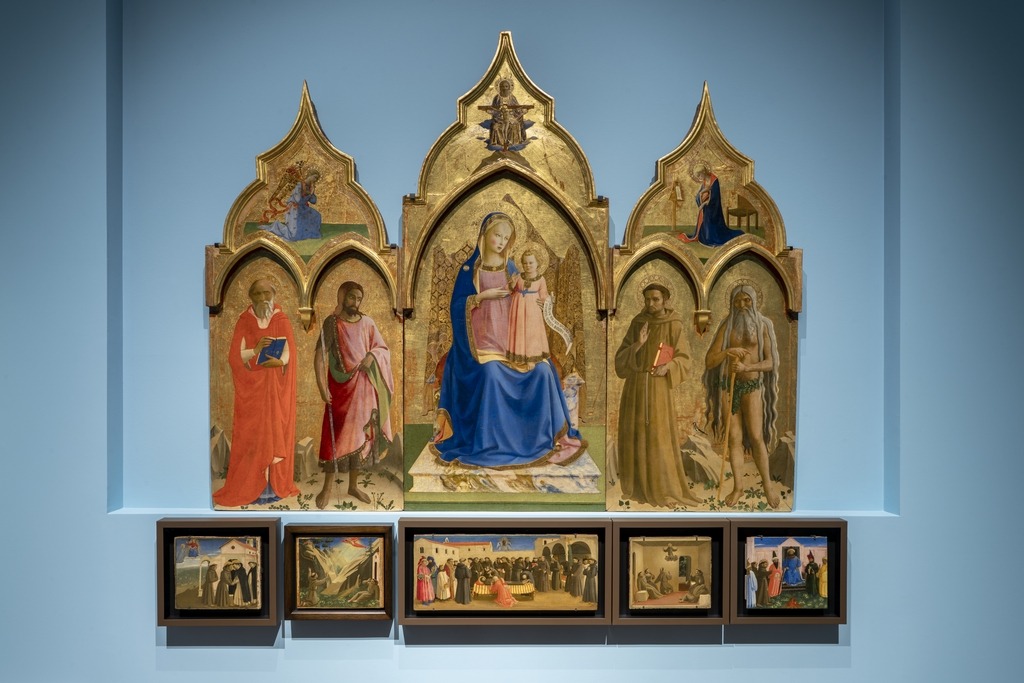This altarpiece is the only known commission to Fra Angelico from a confraternity associated with the mendicant order of the Franciscans, historically the rivals of the Dominicans.
They associated the payment to the present triptych, whose main register was in poor condition, possibly explaining why it had been overlooked in art historical literature. This neglect particularly affected the side panels, long left in storage in the charterhouse at Galluzzo, earning the work the inaccurate name of the ‘Certosa Triptych’.
Despite its state of preservation, the importance of this work in Angelico’s career should not be underestimated.
It has a fundamental place in the development of the altarpieces that he produced. Its proportions are even more monumental than the altarpieces for San Domenico in Fiesole and San Pietro Martire. The Virgin at the centre is deliberately depicted as larger than the saints who flank her, treated almost like statues. The amount of precious materials—the gold ground, the lapis lazuli blue of her mantle, the brocaded cloth of honour, and the Baptist’s silver cross—is striking. The painter rendered hair with the care of an illuminator, in particular Saint Jerome’s beard and the long locks and body hair of the naked hermit saint Onuphrius.
This care for detail extends to the Annunciations on either side of the Trinity in the pinnacles. It is especially evident in the gilded mantle of God the Father; the ring on the Virgin’s finger, a sign of her fidelity to God; and the simple, realistic straw-bottomed chair behind her.
The splendour of the main register can now be appreciated following its restoration by the Opificio delle Pietre Dure in Florence for this exhibition, which, however, cannot conceal the extensive damage it has suffered over time. In the early seventeenth century, the chapel of the Compagnia di San Francesco was moved to the lower level of the convent, where it is believed that the altarpiece, still with the predella, was also transferred. In 1785 the confraternity was suppressed and the predella was probably dispersed, either at that time or when the convent of Santa Croce was suppressed in 1810. The main panels, harshly restored with caustic soda, were assigned to the Galleria dell’Accademia and then deposited in the Certosa del Galluzzo. Only the central panel, being in a better state, was later transferred to the Museo di San Marco.
The predella consists of five panels depicting stories of Saint Francis of Assisi. Three of them are in the Gemäldegalerie in Berlin: the Meeting of Saints Dominic and Francis of Assisi, the Apparition of Saint Francis of Assisi at Arles (both purchased in 1823 in Rome from Jakob Salomon Bartholdy), and the Funeral of Saint Francis of Assisi and Verification of the Stigmata (a gift in 1909 from the director general of the Berlin museums, Wilhelm von Bode, who had received the painting as the honorarium for a catalogue of John Pierpont Morgan’s bronzes; see Bode 1930, 1997 ed., 1, pp. 370–71). The Trial by Fire before the Sultan (acquired in 1845 in Rome) is in the Lindenau-Museum in Altenburg, while the Saint Francis of Assisi Receiving the Stigmata has been in the Musei Vaticani since at least 1837. Miklós Boskovits (1976b, pp. 36–38) first recognised that the predella belonged to this altarpiece.
In contrast to the rigidity of the main register with its canonical composition against gold ground, in the predella Angelico gave free rein to his imagination, depicting a landscape of unprecedented freshness (in the Meeting of Saints Dominic and Francis), nocturnes as surprising as they are mystical (in the scene of the stigmata and in the Apparition at Arles) or, in the Trial by Fire, a composition similar to a sacra conversazione that appears again in his pale quadre, starting with the San Marco Altarpiece. It is notable that the painter worked most boldly in a marginal section of the polyptych, namely the predella, where he laid the foundations for his future creations.
The original sequence of scenes in the predella has been discussed at length. Due to its size, twice as wide as the other scenes, the Validation of the Stigmata and Funeral of Saint Francis certainly occupied the central part. X-radiographic analysis conducted by the Opificio delle Pietre Dure in Florence for this exhibition (working closely with the three museums that house pieces of the predella) confirmed that the Meeting of Saints Dominic and Francis was on the far left followed by Saint Francis of Assisi Receiving the Stigmata and, to the right of centre, the Apparition of Saint Francis of Assisi at Arles followed by the Trial by Fire before the Sultan. The sequence of the stories is not chronological, and they seem to be ordered by a desire for a compositional balance between daytime and nocturnal scenes.
Neville Rowley



